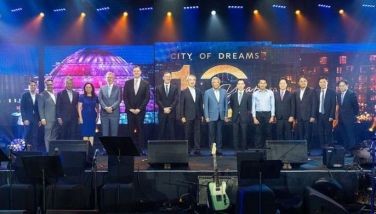Transport sector in gridlock over traffic, infra lack
MANILA, Philippines - The private sector has expressed willingness to work with the new administration to help resolve the worsening traffic situation, improve the mass railway system and address infrastructure gaps in aviation.
In particular, two of the country’s biggest business groups the Philippine Chamber of Commerce and Industry (PCCI) and the Makati Business Club (MBC) have both expressed willingness to work with the new administration in addressing Metro Manila’s worsening traffic problems.
PCCI president George Barcelon said the group is supportive of Transport Secretary Arthur Tugade’s plans and has even shared observations and suggestions to improve the traffic situation. “Actions are needed while waiting to improve infrastructure. It would be gridlock if the present day system is maintained,” Barcelon said.
The MBC said it is also ready to assist and be part of a highly thorough process of consultation, debate, and analysis between the government and the private sector. “If the solutions to address the transport crisis require emergency powers, MBC will be prepared to support the consideration of well-defined emergency powers for the transport sector, provided these emergency powers are specific, limited, and timebound; anchored on a solid national policy; and complemented by a strong system of accountability,” Barcelon said.
While the extent of the emergency powers would depend on what is approved by Congress,Tugade said such special powers may be in place for two years to allow the government to synchronize traffic regulations of local government units, open private subdivisions to traffic as well as the takeover of certain properties necessary for traffic or other transportation requirements.
In such cases, Tugade said the government would negotiate and ensure compensation for the affected party. “We do not intend to be arbitrary, capricious or whimsical or confiscatory. They will be asked for and negotiated for in the interest of common good following certain procedural matters to assure the public that it is not confiscatory,” he said.

Rush hour traffic in EDSA.
Uber Philippines general manager Laurence Cua said the ride-share app also intends to work with the new officials of the government in offering solutions to decongest Metro Manila’s main thoroughfares.
“We’re very optimistic with the new government coming in. I think we’re all excited to tackle this problem. Some people might be worried about how do you tackle such a big problem like traffic? But we’re more optimistic at Uber…I think embracing technology and understanding it’s an ally on how to solve problems has been a good first step but you know, the journey is still long,” he said.
A report by the Japan International Cooperation Agency (JICA) said the country stands to lose up to P6 billion a day by 2030 because of worsening traffic jams. JICA said the costs of traffic would continue to rise if adequate solutions to ease congestion are not implemented.
Train pains
The sorry state of Metro Manila’s mass transport system, particulary the Metro Rail Transit (MRT-3), continues to afflict the daily lives of hundreds of thousands of commuters enduring the long lines at its stations, congestions and frequent breakdowns.
The MRT-3 currently serves close to 600,000 passengers per day, more than its designed capacity of only 350,000 passengers daily.

MRT-3 train plying the EDSA route.
Noel Kintanar, Transport Undersecretary for rails said the government is committed to addressing the maintenance issues of the MRT-3 as well as other railway systems such as the Light Rail Transit (LRT) Lines 1 and 2.
To provide relief and ensure safety of MRT-3 passengers, he said the government is also working on raising the railway’s capacity, improving the power supply and upgrading the signaling system.
He said the MRT-3 team in particular, is committed to bringing the number of operational trains to 20 from 17 at present, during the first 100 days of the new administration.
Tugade said the government is also looking to provide a solution to the common station impasse within the first 100 days of the new leadership.
The Department of Transportation and Communications (DOTC) earlier proposed having two common stations with one located near SM North EDSA mall and the other closer to the Trinoma mall, to link LRT-1, MRT-3 and the MRT-7 which is currently under construction.
DOTC’s proposal was offered as a compromise for allegedly breaching an agreement entered into by the LRT Authority with SM in 2009 to put up a common station for the railways near the SM North EDSA mall.
DOTC decided in 2014 to have the common station near Ayala Group’s Trinoma mall instead of SM North EDSA mall citing savings in construction cost as well as convenience of passengers.
Metro Pacific Investments Corp. (MPIC) has re-submitted its proposal to the new administration to rehabilitate the MRT-3. The infrastructure conglomerate’s proposal which was first submitted in 2011, offered to make an investment worth more than $500 million to upgrade the train system. It was thumbed down however, as it also involved hiking fares for the MRT-3.
“You can see it (rehabilitation) is necessary,” MPIC chairman Manuel V. Pangilinan said.
Aviation needs action
Local airline companies are optimistic the new administration would implement measures and come up with a policy to address major issues such as congestion and lack of infrastructure to support the growth of the aviation industry.
“I think it will be better not only for Philippine Airlines (PAL) but for the whole airline industry. I think the executive officers that were appointed for the transport aviation sector are very qualified, knowledgeable about the industry and with that, I am very optimistic that the Duterte administration will formulate an aviation policy that will improve, that will address the major issues that we are now facing in the industry,” PAL president and chief operating officer Jaime Bautista said.
For his part, Cebu Pacific president and chief executive officer Lance Gokongwei said despite the challenges facing the local aviation industry, the outlook remains bright for the sector.
“There is a lot of confidence in the transition, the new presidency. Actually, if the economy grows, I think the aviation industry will likewise grow. And I think…there are going to be concrete steps to really improve the most pressing issues which are really related to infrastructure,” Gokongwei said.
The new administration is looking to develop the Clark International Airport as well as pursue a railway system that would connect Manila and Clark to encourage the use of that airport and ease congestion at the Ninoy Aquino International Airport (NAIA).
Tugade said he is also open to allowing interested firms to build a new airport provided there would be no cash out and sovereign guarantee from the government and the proponent would be responsible for encouraging aircraft to land and utilize the airport.
Roberto Lim, transport undersecretary for aviation and airports said the new government is also looking to develop provincial airports and pursue the regional airports project being offered as a public-private partnership (PPP) project under the previous administration.
The regional airports project covers the upgrade of a total of five airports under two bundles, with the first bundle composed of the P20.26 billion Bacolod-Silay Airport and P30.40 billion Iloilo Airport, and second bundle involving the P2.34 billion New Bohol (Panglao) Airport; the P40.57 billion Davao Airport; and P14.62 billion Laguindingan Airport.
Under the PPP project, the private partner for each bundle would be responsible for the operations and maintenance of the airports, as well as expanding the facilities.
“As the new team, we are just getting up to speed with the review of the projects but the overall goal is to provide the infrastructure to allow Philippines to absorb more traffic, support a successful tourism program,” Lim said.
Apart from having a positive outlook on the industry, local airlines have also taken the first step in working with the government to make improvements in the aviation sector.
In particular, PAL, Cebu Pacific, Philippines AirAsia Inc., PAL Express and Cebgo have entered into an agreement with the Department of Transportation to assume the responsibility to maintain the toilets in all terminals in the country’s main international gateway.
NAIA has managed to shed its title of being among the worst airports in the world based on a survey conducted by travel website “The Guide to Sleeping in Airports” last year, but it still eighth worst in Asia.
The survey has identified the lack of restrooms as one of the areas where improvements could be made in the NAIA.
Following the cooperation forged on the upkeep of restrooms in the NAIA, Tugade said he is hopeful the government could explore other areas of cooperation with the private sector to address issues affecting transport sector.
- Latest
- Trending
























